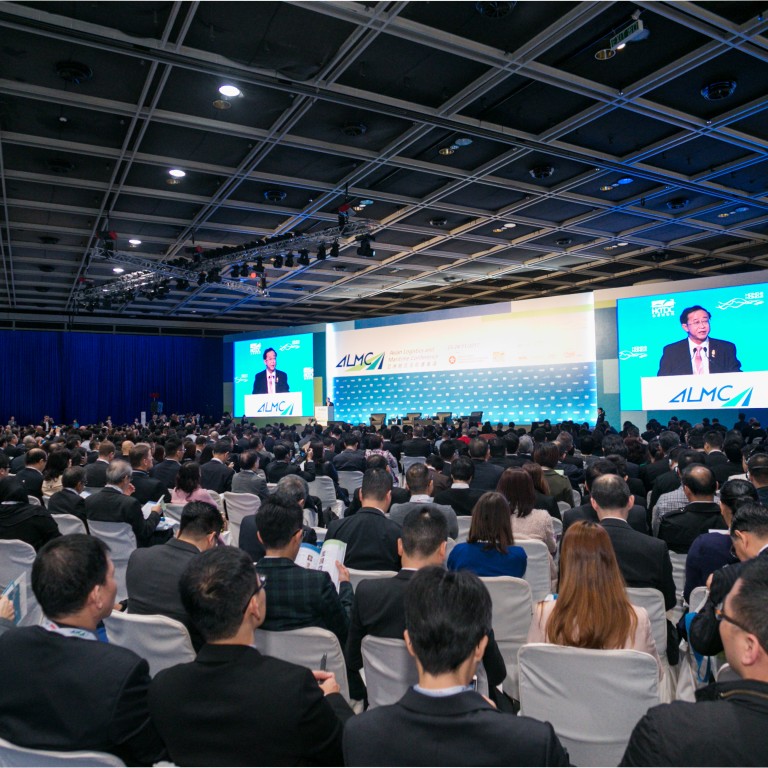
Europe-Asia Railroad Projects Underway Offer Boundless Business Potential
HKTDC Strategies Help Logistics Industry Seize Belt and Road Opportunities
[Sponsored Article]
Looking back on 2017, Europe’s economic recovery continued, while the United States under the Trump administration has introduced the country’s most sweeping tax reform in 30 years, both of which are expected to stimulate continued global economic growth. China’s Belt and Road Initiative, meanwhile, is entering the implementation phase. Major infrastructure projects, including rail projects connecting Europe and Asia are underway, providing fresh impetus to the Initiative and accelerating trade, talent and capital flows that are conducive to the development of maritime and logistics sectors. At the dawn of the new year, the Hong Kong Trade Development Council (HKTDC) will continue to tap its global network, implement its five major development strategies, and use its year-round promotional activities, major conferences, business missions and exchange activities to help the logistics industry seize the latest business opportunities arising from the Belt and Road Initiative.

Five major development strategies
To help the development of the Belt and Road Initiative, the HKTDC in the last five years, has formulated five major development strategies to promote Hong Kong’s role in the Initiative. First, having formulated a road map and studied the economic environments of related countries, the HKTDC has set up the Belt and Road Portal to promote the exchange of information -- to disseminate research findings, provide the latest information, list investment projects and share success stories.
Secondly, the HKTDC has established a cooperation platform with its annual ‘Belt and Road’ Summit, which features leading figures from various sectors to offer insights and allows participants to find business and investment opportunities. Meanwhile, it also organises conferences and exhibitions for different industries such as the Asian Logistics and Maritime Conference, to foster industry-exchange and build the foundation for future cooperation.
Thirdly, the HKTDC exchanges information with various government departments, companies and professional organisations to explore cooperation opportunities and partnerships. Fourthly, the HKTDC has built relationships with business and political circles in regions around the world by drawing on its well-developed global networks. Leveraging the advantages of these networks, the HKTDC has organised many outreach investment and business missions, including a delegation of Hong Kong and Shanghai enterprises to visit Thailand and Vietnam to explore business opportunities for the industry. The last step involves integrating all the elements by providing a one-stop business-matching that connects capital, professional talents and development projects.
Formation of Belt and Road committee
To complement the five major development strategies and maximise Hong Kong’s competitive advantages, the HKTDC has set up a dedicated Belt and Road Initiative team. It has also invited community leaders to form a Belt and Road committee, headed by the HKTDC Chairman. Through its five working groups: International Market, Chinese Mainland & ASEAN, Professional Services, SMEs & Younger Generation, and PR & Communications, the committee examines development strategies, establishes networks and organises activities, as it sets out to achieve tangible results by facilitating investment and business cooperation agreements. These initiatives aim to attract various parties to use Hong Kong as a Belt and Road investment and trade platform, stimulate Hong Kong’s economic growth, and transform Belt and Road from vision to reality, opening more business opportunities for Hong Kong enterprises in Belt and Road markets.

In search of logistics opportunities
The HKTDC’s five major development strategies cater comprehensively to the industry’s needs. For instance, catering to the logistics and maritime sectors, the HKTDC invites industry leaders to attend the annual Asian Logistics and Maritime Conference, held in November, to examine the latest opportunities. Siddique Khan, CEO of Kerry Globalink Logistics, said that the recent Asian Logistics and Maritime Conference was “an excellent networking platform, and helps industry players to grasp the latest industry trends.”
He noted that when the Belt and Road Initiative was announced in 2013, “it was more or less a consolidation of scattered programmes. But President Xi’s input helped fast-track what we previously saw. In the last three years in particular, there have been much greater results.” Among them, he believes that rail transport is one of the most cost-efficient and reliable transportation methods and plays a significant role in the Belt and Road Initiative. “A train can take up to 44 containers, which move at the same time and at a predictable speed. Compared to trucks, cargo can be carried more safely and in greater quantities, and all arrive at the same time,” he says.

Europe-Asia rail developments to propel land transportation
Rail developments connecting Europe and Asia are set to significantly reduce the commute time between Western China and Europe. Take the Chongqing-Xinjiang-Europe Railway, for instance: the rail route starts in Chongqing and runs through Xian, Lanzhou and Ürümqi to Alashankou on China’s border through the Northern Xinjang railway in the northwest, and moves through Kazakhstan, Russia, Belarus, Poland and Duisburg in Germany. Hailed as the “New Silk Road,” the route covers a distance of 11,179 kilometres. Transporting goods from Chongqing to Europe took an average of 45 to 60 days in the past, but rail freight from Chongqing to Germany now only takes 13 days via the Chongqing-Xinjiang-Europe Railway.
Siddique Khan says that the Initiative benefits smaller economies, including Kazakhstan, Pakistan, Vietnam and Cambodia, as well as small-and-medium sized enterprises (SMEs) due to transport improvements, increased connectivity and more direct trade. He adds that Chinese traders are increasingly using Western China to access Central Asia. The tremendous opportunities arising from the Belt and Road Initiative not only boosts the development of the logistics sector, it also has spurred many member countries to upgrade their soft infrastructure and related facilities. It has also created substantial market demand for banking, legal, accounting and tax services, as well as logistics infrastructure, which Hong Kong enterprises can tap.
